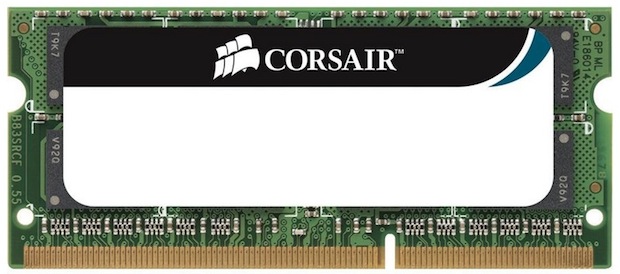So in this post we are going to show a several ways to find out what RAM type and speed a given Mac uses, what the maximum amount of supported RAM is, and if RAM slots are available.
One of the most quickest ways to check your Mac’s RAM is by going to “About This Mac” , which will identify the memory module type and speed, how many RAM slots there are on the Mac, and which slots are in use. Here’s what to do:
- Pull Down the Apple  logo above and go to “About This Mac”
- Now click on “More Info” to summon system information.
- click on the “Memory” tab for information about your Mac RAM, including maximum capacity, used memory slots, and which type of RAM the Mac accepts.
All Macs will show the maximum RAM, what size RAM modules are installed, if there are open memory slots, and the RAM speed used. Here’s an example showing a Mac with available slots:
If the Mac is not upgradeable because RAM is either inaccessible to users or soldered onto the board, which is commonly the case for MacBook Air and Retina MacBook Pro models, then you will still find the RAM details, but there will be no available slots just as shown in the picture above..
So now if you can see empty slots and want to upgrade your Mac’s RAM, , the most important information to know when ordering or looking for upgrade modules is the RAM module type and speed, which is always shown at the top of the “Memory†screen and labeled something like “Your Mac contains 4 memory slots, each of which accepts a 1333 MHz DDR3 memory module.†It’s the “1333 MHz DDR3″ (or whatever it says) part that is most important to know:
Want an easy way instead of going there and there following a lot of ways, well better for to try MacTracker app, one of the most quickest and free apps for Mac OS X that offers a tons of useful information about every Apple product ever released, including Macs. Conveniently, the app runs on both iOS and OS X, so download whichever version you prefer (again, it’s free):
- Download MacTracker for Mac OS X (Requires OS X 10.6.8 or later).
- Download the free iOS version for iPhone/iPad and iPod Touch.
After installing MacTracker on your Mac OS X you will find a lot of informations and many things about your Mac, so ignore it and let us focus on what we are here for which is Memory Information.. so locate your Mac through the list or search, then choose the Memory tab to see details about the Macs RAM capacity, type, and if it’s user serviceable (i.e.: upgradable) or not.
Mactracker provides detailed information on every Apple Macintosh computer ever made, including items such as processor speed, memory, optical drives, graphic cards, supported OS versions, and expansion options. Also included is information on Apple mice, keyboards, displays, printers, scanners, speakers, cameras, iPod, Apple TV, iPhone, iPad, Wi-Fi products, Newton, iOS, Mac OS, and OS X versions.
Still confused and didn’t find anything useful ?? Well I don’t have any other alternative or easier ways except telling you to check Apple’s web support where you will be able to find your Mac’s RAM and I am very sure you will find a huge knowledge base of technical details on every Mac model:
- Go to Apple Support knowledge base for Macs, and select your general Mac model from the list
- Choose “Tech Specs†and locate the precise model and model year
- Look for “Memory†to find the RAM type and maximum supported RAM amount
By going to Apple Support knowledge base for Macs, you will find a tons of information about your Mac and you will not need to download MacTracker app or else… So in this post you learned how to find the type of RAM a Mac uses and the maximum supported memory usage..
We will be coming later with more iPhone and Mac OS X tips and tricks so keep yourself updated with us daily for more knowledge…






